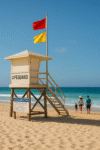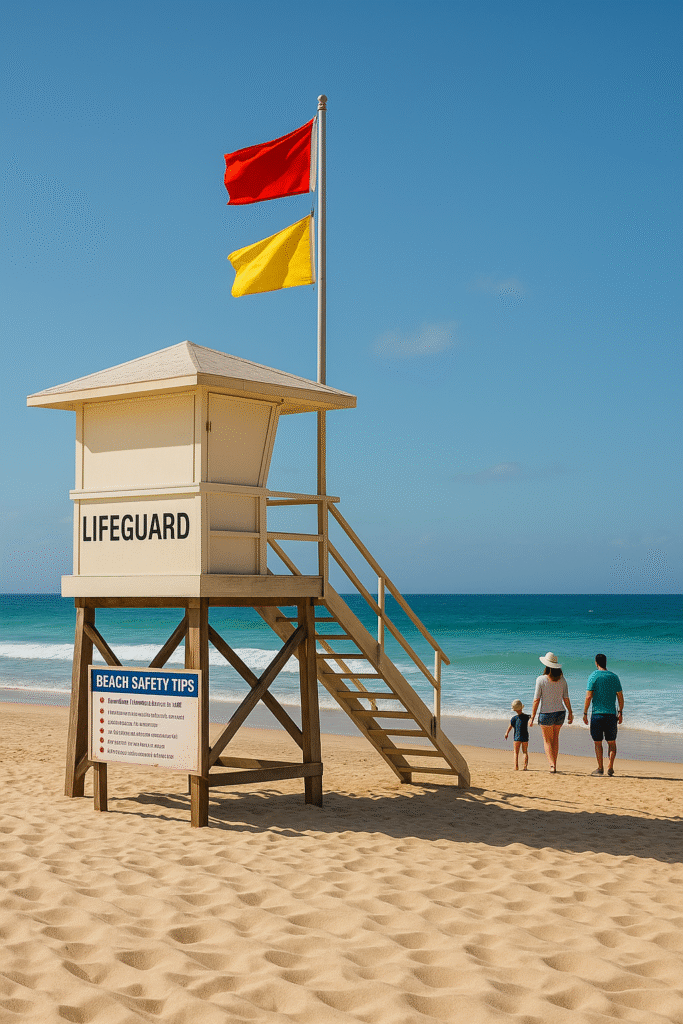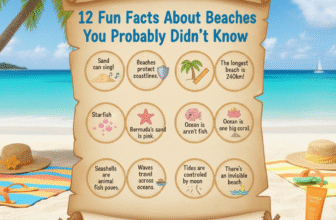
🌊 12 Essential Beach Safety Tips Everyone Should Know
The beach is a place of relaxation, fun, and adventure — but it also comes with risks if you’re not prepared. Every year, thousands of beachgoers suffer from sunburn, dehydration, or even dangerous rip currents simply because they didn’t know the basics of beach safety.

Whether you’re planning a family outing, a solo trip, or a beach vacation abroad, these 12 essential beach safety tips will help keep you safe while you enjoy the sand and surf.
🏖️ 1. Swim Between the Flags
If a beach has lifeguards, always swim in the designated areas marked with red and yellow flags. These zones are monitored and safer than unsupervised waters.
🌊 2. Learn to Spot a Rip Current
Rip currents look like calm channels of water moving out to sea. If caught in one, don’t fight it. Swim parallel to the shore until you’re out of the current, then return to land.
🌞 3. Use Proper Sun Protection
Apply sunscreen with at least SPF 30, wear UV-protective clothing, and reapply sunscreen every 2 hours. Don’t forget your ears, nose, and the tops of your feet.
💧 4. Stay Hydrated
Bring plenty of drinking water. Heat and saltwater can dehydrate you quickly, especially if you’re active in the sun.
🕶️ 5. Protect Your Eyes
Polarized sunglasses with UV protection reduce glare and protect your vision from harmful rays.
👒 6. Wear a Hat or Cover-Up
A wide-brim hat or lightweight cover-up can help prevent sunstroke and keep you comfortable throughout the day.
🚫 7. Never Turn Your Back on the Ocean
Waves can surprise you, even in shallow water. Always keep an eye on the sea, especially if you’re near children.
🏄 8. Respect Local Warnings
Check for posted signs or flags that warn about jellyfish, sharks, or strong surf. Always follow local safety advice.
🧴 9. Bring After-Sun Care
Even with sunscreen, minor burns happen. Aloe vera or cooling gels help soothe and protect your skin after a long day in the sun.
🧒 10. Keep Children Within Arm’s Reach
Strong waves can easily knock children off balance. Always stay close when kids are in or near the water.
🦀 11. Watch Where You Step
Some beaches have sharp shells, rocks, or marine life (like crabs or jellyfish). Water shoes can help protect your feet.
🕰️ 12. Plan Around Tides
Know the tide schedule. Rising tides can cut off beach access in some areas, and low tides may expose sharp rocks or sea urchins.
Conclusion
A safe beach trip is a fun beach trip. By following these 12 tips, you’ll avoid the most common dangers and enjoy your time by the sea with peace of mind. Share this guide with family and friends before your next outing — it could save them from a ruined vacation.







